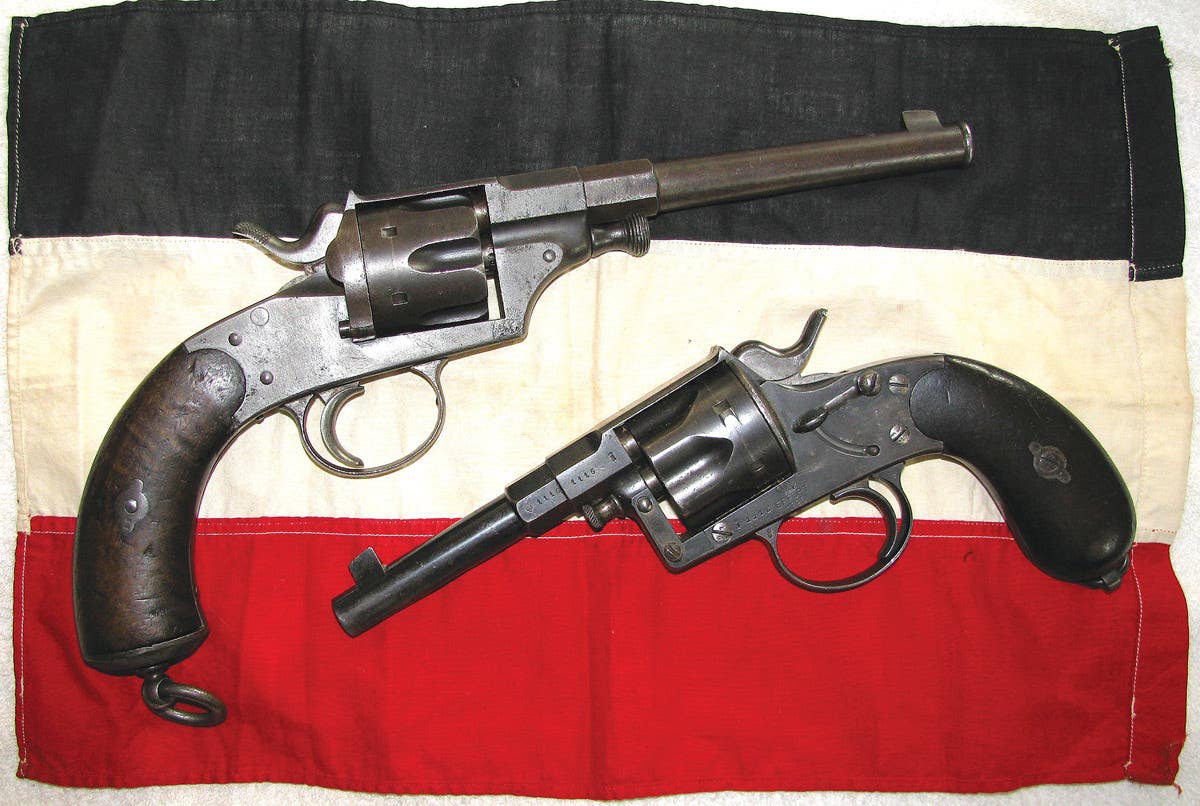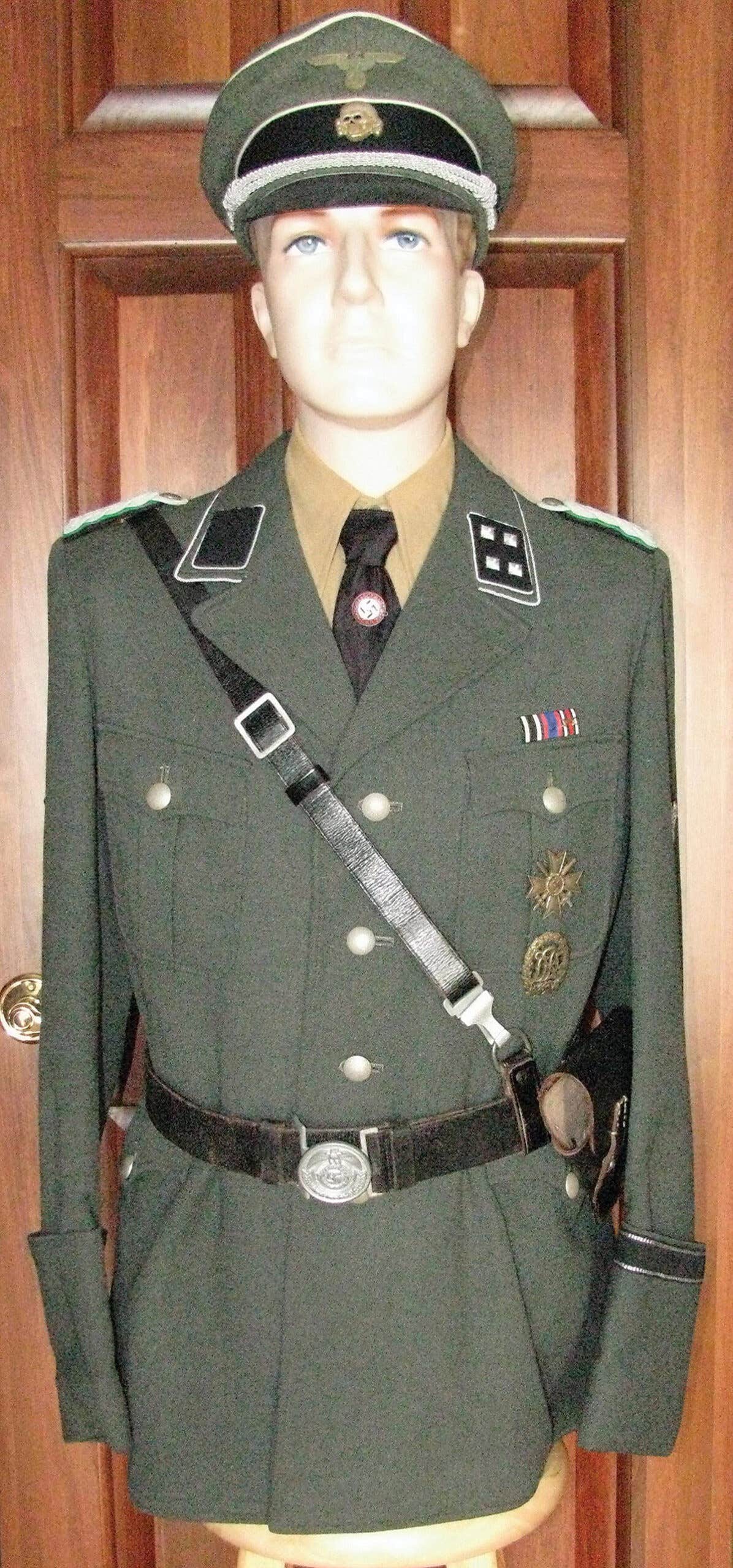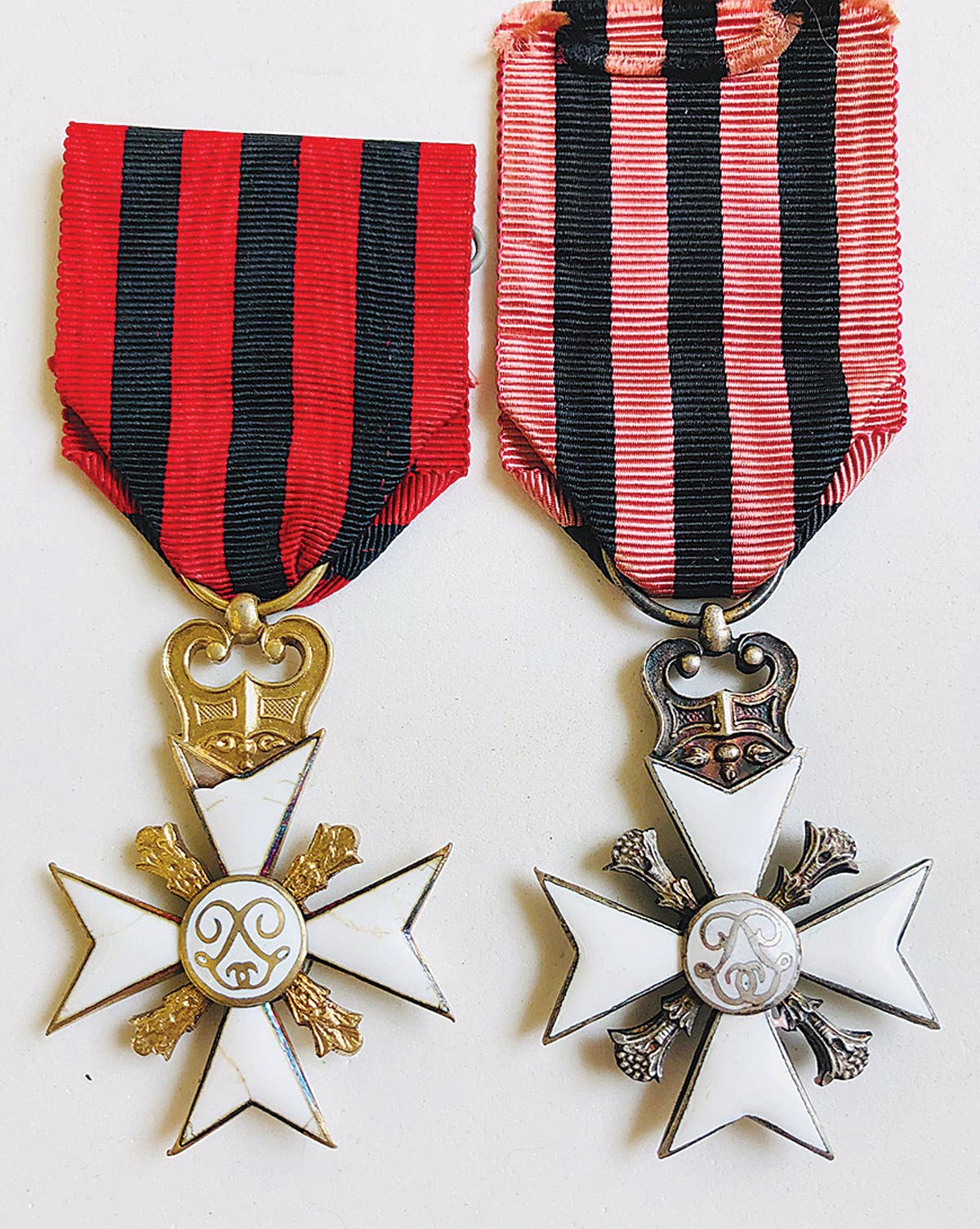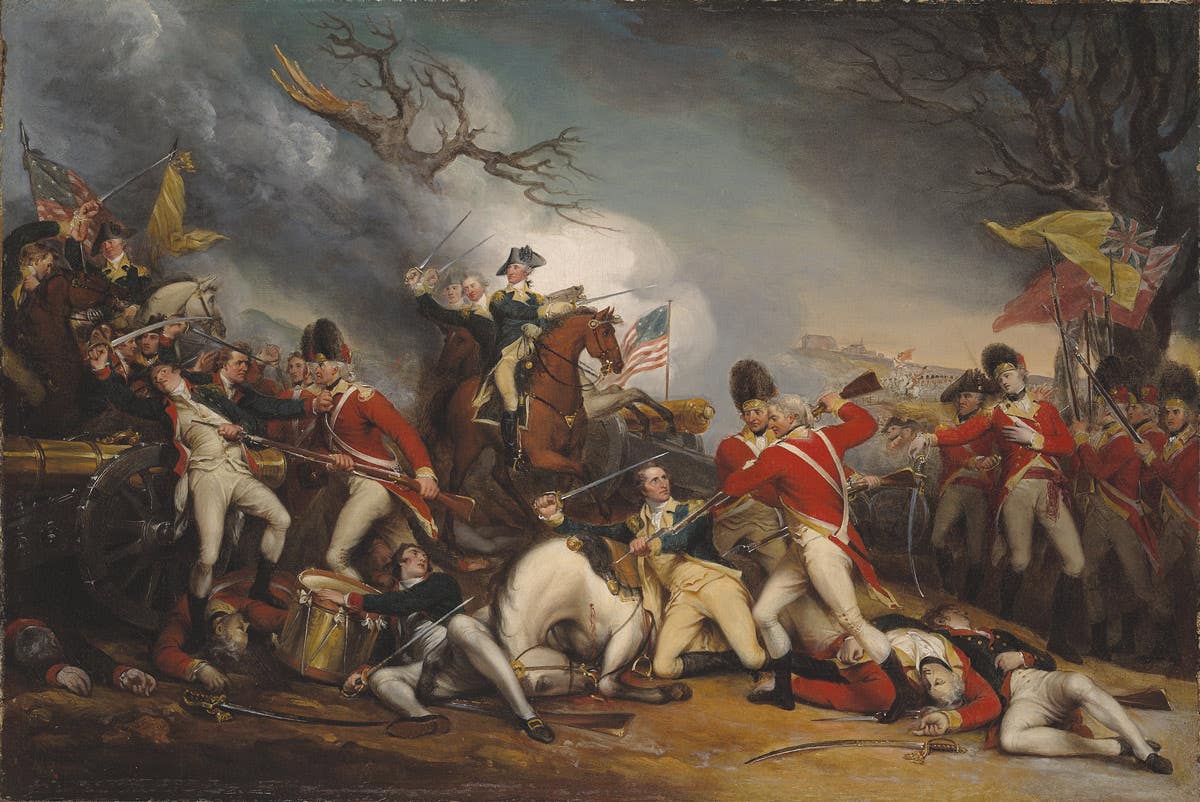‘Nationalsocialistische Deutsche Arbeiterpartei’
A look at badges and pins that helped define the Nazi party
Many times, in today’s political and social climate we hear the word “Nazi” loosely thrown around in anger by those attempting to demonize people on the other side of an issue. But who were the actual historical Nazis and what were their policies and motivations?
In late 1918, the First World War had come to its bloody ending with Germany and the other Central Powers defeated on the battlefields of Europe. Following the vindictive Allied Treaty of Versailles, Germany was forced to relinquish much of its territories and manufacturing industries, minimize its military forces to no more than a scantily equipped national “police force”, and pay war reparations that would destroy much of its economy for decades to come. The newly formed Weimar government was weak at best, and unable to prevent the formation of communists and other subversive groups across the country, who were all eager to turn Germany into their idea of an idyllic socialist state.
Opposing both the communists and the democratic principles of the Weimar Republic were dozens of nationalistic groups, mostly made up of ex-soldiers, the unemployed and diehard monarchists. In order to keep tabs on both the communist and right-wing organizations who threatened to overthrow the Republic, the German Army, in collusion with the government, sent clandestine agents to spy on the various groups.
Adolf Hitler, a disgruntled soldier who had served in the trenches, was assigned as a military “Verbindungsmann” (intelligence agent) to observe the “Deutsches Arbeiter Partei” (DAP), a small but vehement nationalistic and antisemitic group founded by Anton Drexler in 1919. While attending their meetings, Hitler’s oratory skills made an impression on the members who quickly asked him to join the group. He resigned from the Army, and by 1920, became the DAP’s featured meeting speaker, headlined 31 times in his first year. His speeches generally revolved around the unfairness of Versailles, and the country’s problems caused by the scapegoated Jews. In 1920, the membership changed the name of the DAP to the “Nationalsozialistische Deutsche Arbeiterpartei” (National Socialist German Worker’s Party – NSDAP- shortened to Nazi). By 1921, Hitler, through political manipulating, intrigue and outright skill, ousted Drexler and became the NSDAP “Fuhrer” (leader).
The main aims of the NSDAP were spelled out in the “25 points” program that was first published in February 1920. These strict guidelines included:
—Non-adherence to the Treaty of Versailles
— Re-unification of all German blooded people
— Disallowing any non-Germans from becoming or remaining German citizens (especially Jews and Slavs who were viewed as “Untermensch” - sub-humans)
— Admitting of only pure German “Aryans” to the NSDAP
— Redistribution of wealth, profit sharing in large companies, nationalization of trusts, increasing old-age pensions and guaranteeing free education. In addition, the points called for improved public health for citizens, adding land to support the growth of the German people, freedom from religion, control of the press, mandatory work for all able-bodied citizens and the reformation of a larger military force for the “protection” of the country.
In 1921, Hitler formed the “Sturmabteilung” (SA – brown shirted storm troopers), charged with protecting him and the other Nazi leaders during the often-dangerous demonstrations, but also used to regularly battle communists and other opponents in the violence prone streets. Due to the young Hitler’s oratory skills (he was only 32 years old in 1921) in rebuilding German pride by denouncing the Weimar government, the “stab in the back” reason for losing the war, the evils of communism, the “Jewish problem” and making seemingly heartfelt commitments for a stronger progressive and cohesive nation, membership in the party steadily grew. If people from other parties were not initially persuaded to join the NSDAP, intimidation by the SA facilitated increased membership as communists and social democrats changed parties. From a mere 60 participants in 1919, the party had grown to about 2 million members by 1933, driven by the party politics, fear of communism and the great depression. These 2 million (with 81% male and 19% female) were comprised of predominately middle class with smaller percentages of industrial workers, self-employed, the upper class and peasants. Twelve years later by the end of the war in 1945, this number had grown to over 8.5 million NSDAP members.
Generally speaking, people who joined the NSDAP did so for one of four major reasons: The first were ardent Nazi idealists, who had fell under the spell of Hitler’s charismatic personality and the NSDAP movement; strict racists with penchants for antisemitism, ultra nationalistic pride and hatred for anything not German. The second type joined the party to “use the system”, enhancing their careers or social status, guaranteeing promotions and insuring avenues to “get ahead”. The third were fervent anti-communists, welcoming a strong party that could combat the perils they saw as the evil nature of Stalin and his cruel dictatorship over the Russian people became apparent. The final members joined because they were tired of Germany’s internal conflicts, hating the uncertainty of the political climate and yearning in lockstep for the old monarchy with its fettering, but tranquil living standards for all who just wanted to accept their places and go about their lives.
To join the party, an applicant first needed to prove their “Germanism” by showing proper racial traits and family history. They would fill out an application form which included their name, address, profession, place and date of birth, date of application, and any optional donation to the party that they would remit with the form. The document was then highly scrutinized by party officials, who judged the applicant’s background, race qualities, and asset value to the party and “Volksgemeinschaft” (national community).
If a person was accepted, they were issued a “Mitgliederkartei” (membership file card) on which was recorded their name, address, “Ortsgruppe” (county, village or city division), NSDAP joining date, membership number and profession. A “Quittungskarte” (receipt card), was used to record monthly party dues. Besides the mandatory dues, members were also required to contribute to any of the other many NSDAP affiliated program drives that frequently popped up. The initial cards were kept for the first year, after which a hardbound membership booklet was issued which contained the recipient’s name, address, birthdate, birthplace, profession, photo and validation stamps. Dues receipts were recorded with stamps on the proceeding pages.
After receiving their membership documentation, members were entitled to wear an NSDAP membership badge. These consisted of a 23mm round convex device with a red enamel outer ring surrounding a white enamel center over which was suspended a canted black swastika. Overlaying the outer red rim were the words “National Sozialistsche DAP”. The reverse had the manufacturer’s or RZM code, and either a pinback or buttonhole attachment to be worn on the member’s left breast pocket, tie front or coat lapel.
For those members who had one of the first 100,000 registered party numbers, and had not broken their membership, Hitler authorized a special honorary party pin with a golden wreath encircling the outside parameter. Hitler could also award this to later members at his personal discretion. If not authorized to wear the regulation party pins, many non-members wore a variety of commercially produced supporters’ pins to show their backing of the NSDAP and the Fuhrer’s movement.
Hitler once commented that only 1 in 10 Germans deserved to be party members. Those who were deemed fit soon found that they were expected to be highly active in the organization, not only monetarily, but politically and socially. In addition to making regular payments, each member was expected to enthusiastically work for the NSDAP organization, handing out leaflets, selling subscriptions, making speeches, attending meetings, leading groups and/or collecting contributions.
On April 30, 1945, the NSDAP, led by its charismatic Fuhrer, died just as assuredly as Adolf Hitler did when he ended his own life in the Berlin bunker. Afterwards, lacking the total subservience to a leader that they had followed over the previous 12-plus years, and realizing the repercussions of having been affiliated with those responsible for the murder of countless people across the continent, Nazi party members quickly disavowed their prior allegiance, and tried to melt back into the general German population. Though 8.5 million Germans had belonged to the NSDAP out of a population of over 80 million, the nation as a whole would carry the guilt for the man and his party that decimated Europe and corrupted world history.
Chris William has been a long-time member of the collecting community, contributor to Military Trader, and author of the book, Third Reich Collectibles: Identification and Price Guide.
"I love to learn new facts about the world wars, and have had the good fortune to know many veterans and collectors over the years."
"Please keep their history alive to pass on to future generations".







